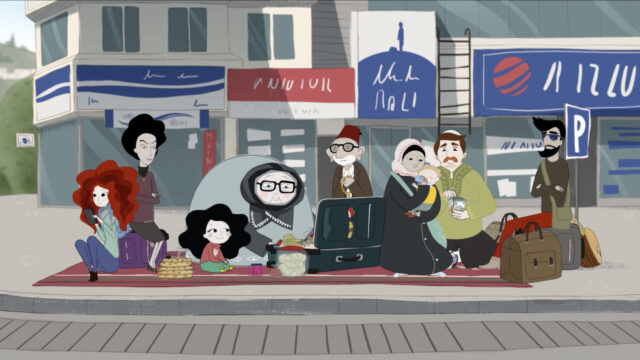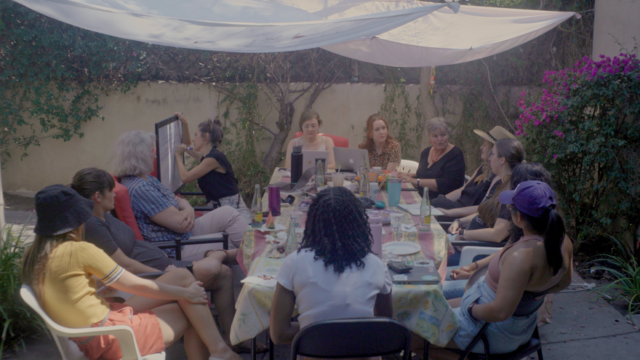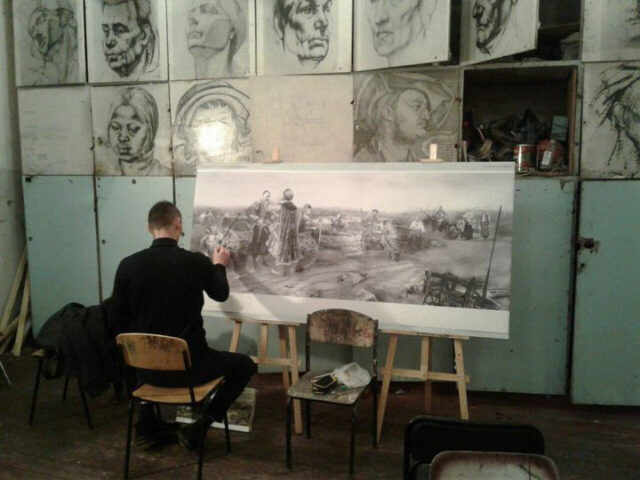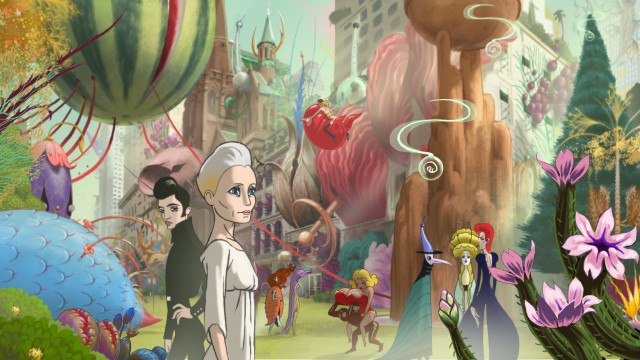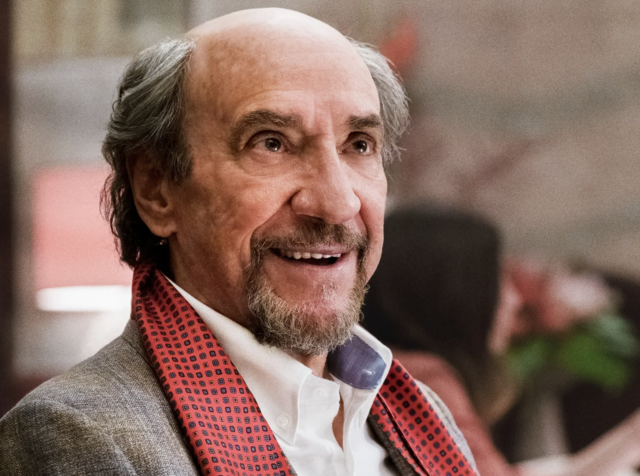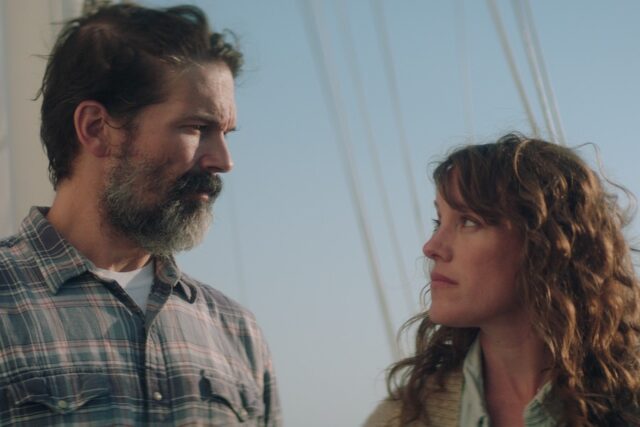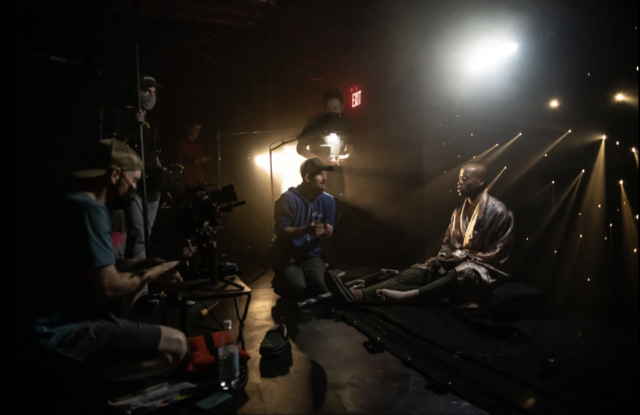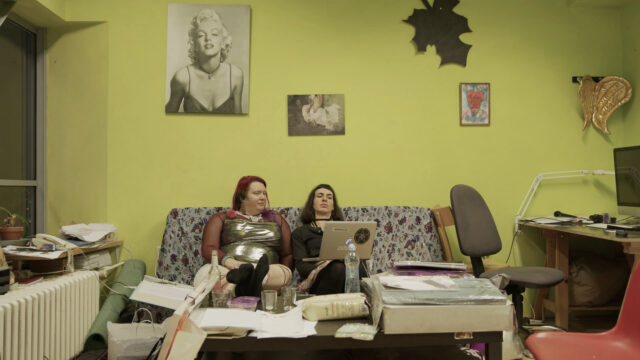
Kateřina Olivová and Darina Alster evaluate potential students in Art Talent Show
ART TALENT SHOW (Adéla Komrzý & Tomáš Bojar, 2022)
Museum of the Moving Image
35th Ave. at 36th St., Astoria
Sunday, March 19, 5:30
Festival runs March 15-19
718-777-6888
movingimage.us
“I think the line between reality and art has been smudged here. . . . You don’t know what’s art and what’s real anymore,” a teacher says in Adéla Komrzý and Tomáš Bojar’s vastly entertaining Art Talent Show, making its New York premiere at the Museum of the Moving Image’s twelfth “First Look” festival, which highlights new, innovative international films. I could say the same thing about Art Talent Show itself, which develops such an intriguing narrative that you might have a hard time convincing yourself that it’s nonfiction; at least I did.
In 2019, Adéla Komrzý was commissioned by rector Tomáš Vaněk and the Academy of Arts (AVU) in Prague to make a documentary in celebration of the institution’s 220th anniversary. Komrzý teamed up with Tomáš Bojar, and they spent four days filming a diverse group of applicants going through the difficult selection process to capture one of the coveted spots, not only creating art but taking written tests and undergoing rigorous personal interviews. Six professors in three departments agreed to let the cameras follow them: Vladimír Kokolia and Eva Červená from Graphic Design, Kateřina Olivová and Darina Alster from New Media, and Marek Meduna and Petr Dub from Painting.
They ask such questions as “What do you think is the role of art in today’s society?” and “What is the worst thing you have done in your life?” and get a wide range of answers from the unnamed students, who sometimes go off on tangents or freely admit they have no idea. Some try to be completely honest, others struggle to assert their identity, and a few use the opportunity to respond as if giving a performance. We learn as much, if not more, about the teachers than we do about the students, especially one who goes off on her own tangent about her sexuality and another who seems to savor grilling the applicants a bit too much. Meanwhile, a pair of older women who work at the reception/security desk gossip about it all.
The hundred-minute film provides compelling insight into the next generation of artists, even via this small sample; many of them talk about how they are making art for themselves, rather than as part of something bigger or considering how their work could influence society and the world at large. Most of them appear to have no interest in art history, instead focusing solely on what they are doing, as if they exist in a vacuum. It also serves as a microcosm of what is happening outside art school, where kids and teenagers are obsessed with social media, trying to figure out who they are in full view of others.
Inspired by Claire Simon’s Le Concours, about an annual French student contest, Komrzý (Intensive Life Unit, Viva Video, Video Viva) and Bojar (Two Nill, Breaking News) avoid reality-show pizzazz, instead trying to be as unobtrusive as possible, choosing the fly-on-the-wall route; at times they set up their cameras in rooms and operate them remotely so their physical presence will not affect the discussions between teachers and students.
The professors reveal their own predilections, especially Olivová, who dresses in colorful childlike costumes and wears kitten ears, offering the students encouragement, whereas Kokolia puts them through a much more direct and almost accusatory investigation. In a promotional interview, Dub explains, “I also realized that the presence of the crew will make us all — both [teachers] and applicants — step out of our comfort zones. However, this is what the art is principally based on: constant searching and crossing borders, whether social or artistic ones. I am not a big fan of safe zones as they blunt our perception, relation to reality, and possibilities of art experiments which are necessary to prevent existential sterility.” Scenes in which the teachers evaluate the artwork and debate topics for the students to address should give pause to the thin-skinned applying to similar programs.
“I don’t know whether to write ‘definite pass’ or ‘definite fail,’” one teacher says about a specific test. Art Talent Show is a definite pass, acing its subject.
“First Look” runs March 15-19 at MoMI, comprising more than fifty shorts and features, with many filmmakers on hand for Q&As. The opening night presentation is Babak Jalali’s Fremont, starring Anaita Wali Zada and Jeremy Allen White, paired with Ruslan Redotov’s Away, two very different refugee tales. The closing night film is C. J. “Fiery” Obasi’s Mami Wata, centered around a powerful mermaid goddess in a West African community.
